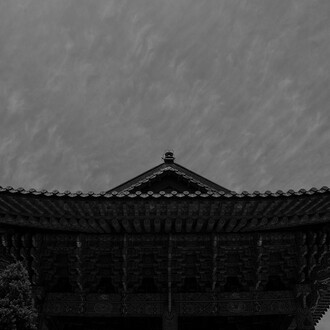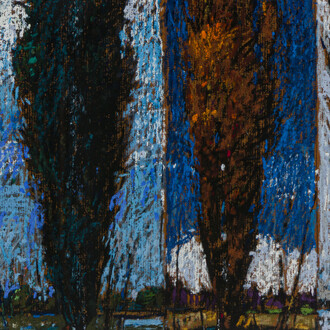Venus Over Manhattan is pleased to present Fish and flowers, a solo exhibition comprising fourteen new paintings by Japanese-born, Brooklyn-based artist Susumu Kamijo. Opening on Tuesday, June 10th, at 39 Great Jones Street, the exhibition marks Kamijo’s third solo presentation with the gallery, following The motherland (2023) and Jack and Venus (2022).
The paintings on view in Fish and flowers show Kamijo expanding his visual vocabulary, introducing new subjects and compositional strategies while preserving the vibrant, graphic style that has become his signature. Widely recognized for his energetic abstractions of animals—especially poodles, but also birds, sheep, and landscapes—Kamijo now turns his attention to flowers and fish, classical motifs employed as fresh vehicles for exploring gesture, color, and surface.
All of the works on view take flowers as their nominal subject. The compositions vary in structure and arrangement, ranging from densely packed clusters of blossoms atop slender stems to commanding, isolated blooms set against sparse, minimally articulated backgrounds. Kamijo renders these botanical forms with exaggerated, voluminous petals that frame stamens and pistils articulated in meticulous detail. With an architectonic clarity reminiscent of the inner structure of certain orchids, these interior elements register a quiet unease. Their unsettling precision introduces a taut visual tension with the planes of color that shape the surrounding petals, complicating the conventional perception of floral imagery as merely decorative or innocuous.
Several paintings feature fish, which Kamijo renders with stylized fins, piranha-like teeth, and rounded heads that echo the sweeping contours of his flowers. He assembles these figures from interwoven contours that trap shifting transparencies, producing shapes that hover between flatness and layered depth. As outlines converge and forms collapse, fish give way to flowers, and the boundary between figure and ground begins to unravel. The result is a set of vibrant, near all-over compositions that privilege formal play over the spatial hierarchies of conventional still-lifes.
The fish and flowers that populate Kamijo’s compositions are subjects long associated with still-life painting, recalling the lush arrangements of Dutch Old Masters and the refined simplicity of Japanese ukiyo-e prints. Kamijo situates these subjects outside their customary contexts, setting aside the symbolic and narrative associations historically invited by still-life painting. Where traditional compositions often relied on carefully chosen objects—wilted flowers, filleted fish, or abundant tablescapes—to convey moral lessons about vanity, mortality, and impermanence, Kamijo shifts his focus to the formal qualities of his subjects. His stylized fish and flowers move between legible figuration and enigmatic structure, compelling sustained visual attention and mapping the subtle threshold between representation and abstraction.
Integral to Kamijo’s practice is his distinctive use of Flashe paint. Its matte, velvety finish yields intensely saturated hues, privileging graphic immediacy over illusionistic depth. His use of clear gesso, by contrast, sets areas of exposed canvas against sharply defined planes of pigment, generating tension through crisp edges and spatial layering. This visual interplay recalls the flattened, lyrical compositions of Milton Avery and the early abstractions of Philip Guston, underscoring Kamijo’s commitment to formal experimentation. Through carefully chosen materials and meticulous technique, he foregrounds the structural aspects of painting, allowing recognizable subjects to surface momentarily before breaking apart into passages of line, shape, and color.
















